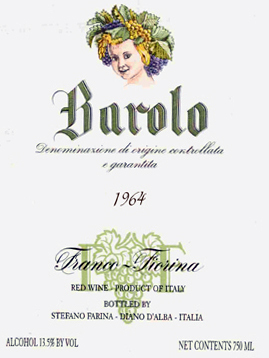1964 Barolo Red Blend
Franco Fiorina Festoom is a stunning red blend from the renowned Barolo region, embodying the elegance and complexity that this area is celebrated for. With its deep, vibrant red color, this vintage from 1964 offers a captivating aroma profile, showcasing dark fruit notes intertwined with nuanced earthy undertones and hints of spice. The wine demonstrates a full-bodied character complemented by pronounced acidity, which contributes to its refreshing liveliness. Tannins are notable, providing a well-structured mouthfeel that gracefully carries the wine's fruit intensity, making each sip an enchanting experience. This exquisite red blend is impeccably balanced, reflecting the artistry of Barolo winemaking and leaving a lasting impression on the palate.
Franco Fiorina Festoom is a stunning red blend from the renowned Barolo region, embodying the elegance and complexity that this area is celebrated for. With its deep, vibrant red color, this vintage from 1964 offers a captivating aroma profile, showcasing dark fruit notes intertwined with nuanced earthy undertones and hints of spice. The wine demonstrates a full-bodied character complemented by pronounced acidity, which contributes to its refreshing liveliness. Tannins are notable, providing a well-structured mouthfeel that gracefully carries the wine's fruit intensity, making each sip an enchanting experience. This exquisite red blend is impeccably balanced, reflecting the artistry of Barolo winemaking and leaving a lasting impression on the palate.




